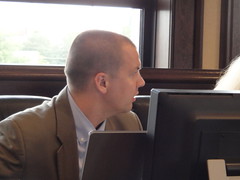The table shows Savannah River as number four in the nation for toxic discharges. It took two states to do that. I wonder where the Altamaha River ranks? And if they did it normalized per mile of river or by population, how about the Withlacoochee River?
Kiera Butler wrote for Mother Jones today, America’s Top 10 Most Polluted Waterways,
An eye-opening new report (PDF) from Environment America Research and Policy Center finds that industry dishcarged 226 million pounds of toxic chemicals into America’s rivers and streams in 2010. The pollution included dead-zone producing nitrates from food processors, mercury and other heavy metals from steel plants, and toxic chemicals from various kinds of refineries. Within the overall waste, the researchers identified 1.5 million pounds of carcinogens, 626,000 pounds of chemicals linked to developmental disorders and 354,000 pounds of those associated with reproductive problems.
The article says the situation has actually improved, but also notes we don’t really know much about it:
We’ll have to take their word for it, since the companies are not required to release the results of their chemical safety testing to the public, nor do they have to reveal how much of each chemical they are releasing. The Clean Water Act doesn’t even apply to all bodies of water in the US; exactly how big and important a waterway must be to qualify for protection has been the subject of much debate. Rivers get the big conservation bucks; they’re the waterway equivalents of rhinos and snow leopards. But pollutants in oft-neglected ditches, canals, and creeks—the obscure bugs of the waterway world—also affect ecosystems and our drinking water quality. Sean Carroll, a federal field associate in Environment America’s California office, estimates that 60 percent of US waterways aren’t protected. “The big problem,” he says, “is that we don’t know how big the problem is.”
Sounds like room for improvement, starting with better transparency.
-jsq









